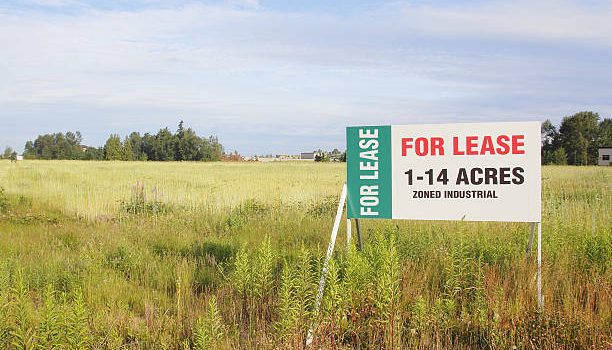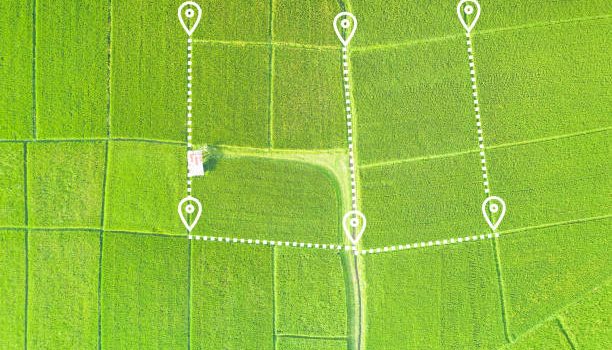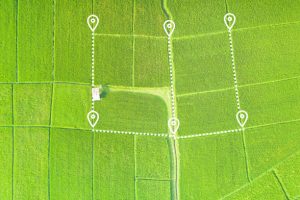
 Buying land is a significant investment that requires careful consideration of various factors. Whether you’re planning to build your dream home, start a business, or invest in property, understanding what to look for in a piece of land is crucial.
Buying land is a significant investment that requires careful consideration of various factors. Whether you’re planning to build your dream home, start a business, or invest in property, understanding what to look for in a piece of land is crucial.
This guide highlights the key factors to consider when searching for your perfect plot.
1. Location:
The location of the land is paramount. Consider factors such as proximity to amenities, schools, work, and transportation. Additionally, assess the neighborhood’s overall development and future prospects to ensure long-term value.
2. Zoning and Regulations:
Research local zoning laws and regulations to understand what types of structures are allowed on the land. Consider any restrictions or limitations that may affect your plans for development or use of the property.
3. Access and Utilities:
Ensure the land has proper access to roads and utilities such as water, electricity, gas, and sewage systems. Assess the cost and feasibility of connecting to these utilities if they’re not already available on the property.
4. Topography and Terrain:

Evaluate the topography and terrain of the land to determine its suitability for your intended use. Consider factors such as slope, elevation, soil quality, and drainage patterns. Flat, well-drained land is often preferred for building, farming, or recreational purposes.
5. Environmental Factors:
Conduct environmental assessments to identify any potential hazards or concerns such as flood zones, wetlands, soil contamination, or endangered species habitats. Understanding these factors can help you mitigate risks and comply with environmental regulations.
6. Survey and Boundaries:
Obtain a survey of the land to determine its exact boundaries and dimensions. Verify property lines, easements, encroachments, and any existing structures or improvements on the land. This ensures clarity regarding the extent of your ownership and rights.
7. Financial Considerations:

Establish a realistic budget for purchasing the land and any associated costs such as closing fees, property taxes, insurance, and maintenance expenses. Consider financing options and seek pre-approval for a land loan if necessary.
8. Long-Term Plans:
Think about your long-term goals and plans for the land. Whether you’re looking for a place to build a home, start a business, or invest for future development, ensure that the land aligns with your vision and objectives.
Finding the perfect plot of land requires thorough research, careful planning, and consideration of various factors. Remember to seek professional guidance and conduct due diligence throughout the buying process to ensure a successful land purchase.











 Buying land can be an exciting and rewarding investment, but it also requires careful planning and consideration, especially for first-time buyers. Whether you’re looking to build your dream home, start a farm, or simply invest in property, understanding the essential steps involved in purchasing land is crucial.
Buying land can be an exciting and rewarding investment, but it also requires careful planning and consideration, especially for first-time buyers. Whether you’re looking to build your dream home, start a farm, or simply invest in property, understanding the essential steps involved in purchasing land is crucial.


 In the competitive world of real estate, creating irresistible land listings is key to attracting potential buyers and maximizing your selling opportunities. Crafting compelling descriptions and captivating photos can make your land stand out in a crowded marketplace and generate interest from prospective buyers.
In the competitive world of real estate, creating irresistible land listings is key to attracting potential buyers and maximizing your selling opportunities. Crafting compelling descriptions and captivating photos can make your land stand out in a crowded marketplace and generate interest from prospective buyers.

 Real-life case studies offer invaluable insights into the strategies and approaches that lead to successful land sales. Whether you’re a seasoned landowner or a first-time seller, examining these real-world examples can provide inspiration and practical tips for optimizing your own land-selling experience.
Real-life case studies offer invaluable insights into the strategies and approaches that lead to successful land sales. Whether you’re a seasoned landowner or a first-time seller, examining these real-world examples can provide inspiration and practical tips for optimizing your own land-selling experience.


 Selling land involves a multitude of legal considerations that sellers must navigate to ensure a smooth and confident transaction process. From understanding property laws to drafting contracts and conducting due diligence, being well-versed in the legal aspects of land sales is essential for sellers.
Selling land involves a multitude of legal considerations that sellers must navigate to ensure a smooth and confident transaction process. From understanding property laws to drafting contracts and conducting due diligence, being well-versed in the legal aspects of land sales is essential for sellers.












 Pricing land can be a challenging task for sellers, especially in a dynamic real estate market where trends fluctuate. Determining the right price requires a deep understanding of current market conditions, local factors, and the unique attributes of the land itself. In this guide, we’ll explore the and provide practical insights on how to price your land effectively for maximum returns.
Pricing land can be a challenging task for sellers, especially in a dynamic real estate market where trends fluctuate. Determining the right price requires a deep understanding of current market conditions, local factors, and the unique attributes of the land itself. In this guide, we’ll explore the and provide practical insights on how to price your land effectively for maximum returns.
 Pricing your land right requires a comprehensive understanding of market trends, thorough research, and careful analysis of the land’s attributes and development potential. With a realistic and flexible approach, sellers can navigate the complexities of pricing land effectively and achieve successful outcomes in the real estate market.
Pricing your land right requires a comprehensive understanding of market trends, thorough research, and careful analysis of the land’s attributes and development potential. With a realistic and flexible approach, sellers can navigate the complexities of pricing land effectively and achieve successful outcomes in the real estate market.



